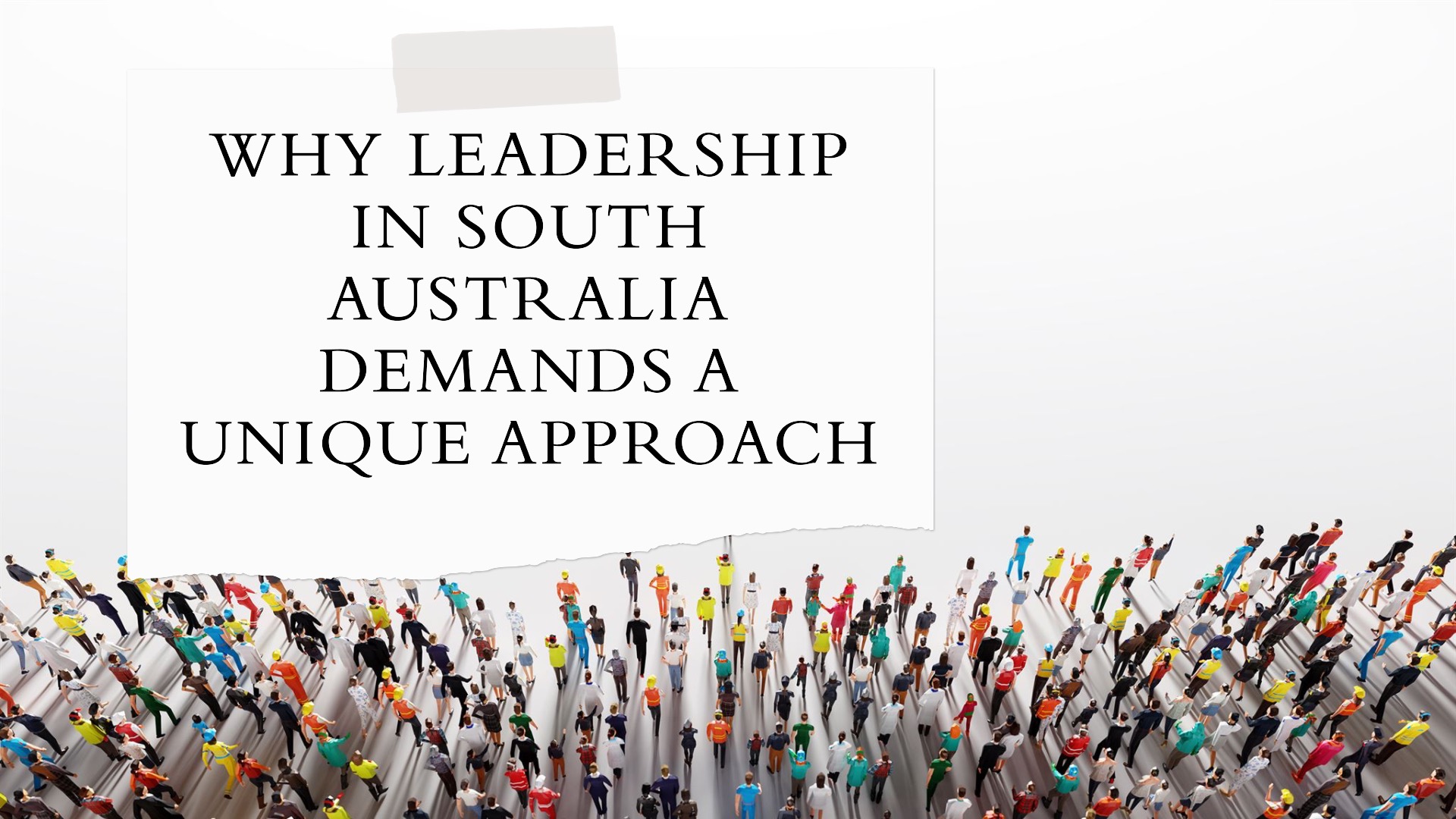
Why leadership in South Australia demands a unique approach.
Leadership in South Australia presents a unique set of opportunities and challenges shaped by the region’s distinct economic, cultural, and social landscape. Unlike larger cities such as Sydney, Melbourne, or Brisbane; Adelaide operates within a smaller market size, a specialised economic focus, and emerging industries that require adaptive and visionary leadership. This blog explores the nuances of leading in South Australia and offers actionable strategies to help leaders thrive.
Understanding Leadership in South Australia
South Australia’s leadership landscape is shaped by its regional economy, industry specialisation, and evolving workforce needs. These factors demand that leaders take a tailored approach to fostering growth, innovation, and resilience within their teams and organisations.
Limited Talent Pools
One of the most pressing challenges in South Australia and Adelaide in particular, is navigating a limited talent pool. Compared to the vast networks in Sydney and Melbourne, Adelaide’s smaller population creates competition for highly skilled professionals. Leaders must prioritize retention and engagement by creating workplace cultures that emphasize development, flexibility, and purpose.
For instance, investing in upskilling programs or partnering with local universities can help organisations attract and retain talent. Additionally, fostering a workplace environment that values employee wellbeing and career progression ensures long-term organisational success.
Economic Specialisation and Industry Focus
South Australia’s economy thrives on specific industries such as defence, renewable energy, advanced manufacturing, and food & wine production. While these industries provide a foundation for economic growth, they also present unique leadership challenges. For example, leaders in defence & space may face stringent regulatory requirements, while those in renewable energy navigate the complexities of sustainability and innovation.
To succeed, leaders must develop expertise in their respective industries while fostering cross-sector collaboration. This requires a combination of strategic vision, adaptability, and a deep understanding of industry-specific dynamics.
Navigating Regional Growth
Adelaide has witnessed significant growth in recent years, driven by innovation and emerging industries. Leaders must guide their organisations through this period of transformation by adopting strategies that support growth and resilience. This includes managing change effectively, integrating advanced technologies, and exploring new markets.
Strategies for Success in South Australia
Despite the challenges, South Australia offers abundant opportunities for leaders who are willing to adapt and innovate. Here are some strategies to help leaders succeed in the region:
1. Embrace Adaptive Leadership
South Australia’s evolving business landscape requires leaders to be flexible and forward-thinking. Adaptive leadership focuses on understanding and responding to complex challenges while fostering collaboration and innovation within teams. By embracing this approach, leaders can navigate the dynamic regional environment effectively.
2. Prioritise Talent Development
Given the competition for skilled professionals, investing in talent development is critical. Leaders should create clear pathways for employee growth and advancement, ensuring their organisations remain attractive to top talent. Offering leadership development programs and mentorship opportunities can also strengthen organisational capabilities.
3. Drive Innovation and Sustainability
As industries such as renewable energy and advanced manufacturing continue to grow, leaders must prioritise innovation and sustainability. Encouraging a culture of creativity, experimentation, and continuous learning allows organisations to stay ahead of the curve while addressing global challenges.
4. Build Resilient Teams
South Australia’s regional economy demands leaders who can build resilient teams capable of adapting to change. This involves fostering open communication, encouraging collaboration, and providing resources that support team cohesion and performance.
5. Leverage Adelaide’s Regional Strengths
Leaders in South Australia have the advantage of operating in a region known for its high quality of life, emerging industries, and strong community networks. By aligning their leadership strategies with these regional strengths, leaders can create competitive advantages for their organisations.
Conclusion
Leadership in South Australia is a dynamic journey shaped by the region’s unique challenges and opportunities. From addressing talent shortages to navigating industry-specific complexities, leaders must adopt strategies that reflect the local context while remaining adaptable to change.
By embracing adaptive leadership, investing in talent development, and driving innovation, leaders in South Australia can unlock their full potential and contribute to the region’s ongoing growth. If you’re ready to enhance your leadership capabilities, explore Sun Dog Consulting’s tailored contextual performance coaching programs designed to empower leaders across South Australia.
Contact Sun Dog Consulting today to learn how we can help you navigate South Australia’s leadership landscape and achieve your organisational goals.
More From This Category
Why Employee Wellbeing Starts with Leadership: The Key to a Thriving Workplace
Why Employee Wellbeing Starts with Leadership: The Key to a Thriving WorkplaceIn today’s fast‐paced work environment, organisations increasingly invest in employee wellbeing programs, from mindfulness apps and gym memberships to flexible working hours and wellness...
Five Step Process to Successful New Leader Assimilation
New Leader Assimilation in 5 steps. Welcoming a new leader into an organisation is a pivotal moment for any team. A structured and thoughtful leader assimilation process can set the tone for a successful transition, build trust, and ensure alignment on goals...
How to succeed as a New Leader: 7 Essential Steps
How to succeed as a New Leader: 7 Essential Steps.Stepping into a leadership role for the first time is both exciting and daunting. New leaders face a unique set of challenges, from building trust with their teams to navigating organisational expectations. The good...
